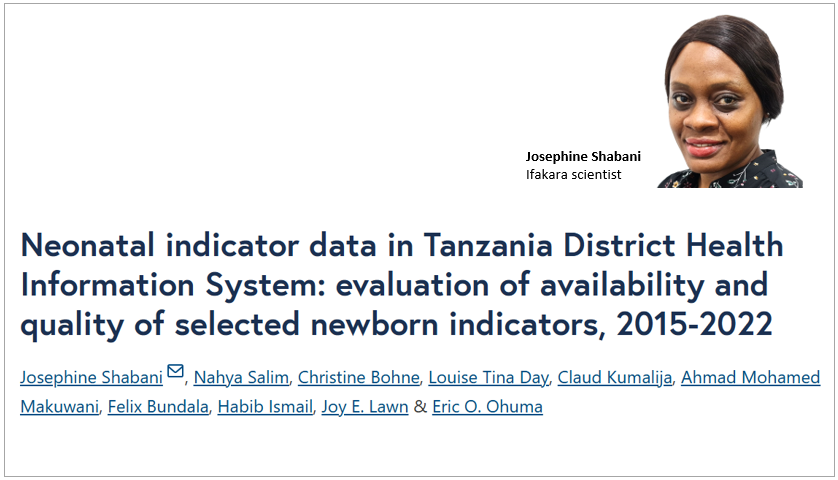
MATERNAL HEALTH: Strengthening health data systems for mothers, newborns

Improving maternal and newborn health requires strong data systems, a study led by Ifakara Health Institute has found. The study emphasizes the need for “a comprehensive strategy” to improve routine data collection at health facilities, ensuring accurate tracking of maternal and newborn health outcomes in Tanzania.
The study, published on the BMC Pediatrics, identified gaps in health data reporting that hinder efforts to reduce neonatal mortality and improve maternal health services in the country.
Why is health data reporting important?
Routine health facility data is essential for monitoring care for small and sick newborns, particularly in regions with high neonatal mortality rates like Tanzania.
However, the country faces challenges in accurately monitoring and recording key health indicators, critical for achieving global health goals such as Sustainable Development Goal (SDG) 3.2.
Ifakara scientist leads the study
The study was led by Ifakara scientist Josephine Shabani, with contributions from colleagues at Muhimbili University of Health and Allied Sciences (MUHAS), Rice University, the London School of Hygiene & Tropical Medicine (LSHTM), and the Ministry of Health in Tanzania.
The team evaluated the availability and quality of maternal and newborn health indicators, focusing on the Every Newborn Action Plan (ENAP) indicator within Tanzania’s District Health Information System (DHIS2).
Using the World Health Organization’s (WHO) data quality framework, they assessed four dimensions: indicator availability, completeness of indicators reporting, internal consistency, and plausibility by comparing DHIS2 data with Demographic and Health Survey (DHS) data.
The impact of data reporting gaps on health outcomes
The study is important because it highlights both strengths and weaknesses in Tanzania's DHIS2 data reporting, particularly regarding newborn health indicators under ENAP, which was launched in 2014.
Results showed that only 70% (14 out of 20) of the key ENAP indicators are captured in the DHIS2 system. Although this represents moderate progress, the scientists’ emphasis is on the alarming gaps in reporting critical indicators such as neonatal mortality, stillbirths, and maternal mortality.
“The inadequate recognition of stillbirths in global health metrics highlights the importance of accurate data capture and reporting. Addressing these data gaps is crucial for fully understanding the impact of stillbirths on women and families and for designing effective interventions,” noted the scientists.
Inaccurate reporting and data inconsistencies
The study also highlights inconsistencies in reporting, such as over-reported figures, underreporting of neonatal mortality (by more than 75%), and discrepancies between different data sources (e.g., DHIS2 vs. DHS), raising concerns about data reliability.
Additionally, many health facilities, particularly newer neonatal care units, lack dedicated neonatal registers, which hinders accurate recording of neonatal deaths—essential for understanding the full scope of neonatal mortality.
Recommendations for improvement
To address these challenges, the scientists underscore the urgent need to improve data collection and reporting systems. They recommend strengthening routine data reviews, implementing quality checks, enhancing validation processes, providing targeted training, offering constructive feedback, and conducting supportive supervision.
Opportunities for progress
Despite these challenges, the scientists highlight Tanzania's notable potential for advancing health monitoring, given that over 80% of births take place in health facilities.
They noted, “With over 80% of births occurring in health facilities in Tanzania, there is a significant opportunity to monitor ENAP indicators. Future research at the facility level should focus on identifying barriers to effective data collection and developing context-specific interventions, particularly in lower-level health facilities where most births occur.”
In conclusion, Josephine and colleagues note that while Tanzania has made progress toward achieving ENAP and SDG targets, “a comprehensive strategy” for enhancing health data systems is crucial for accurately tracking progress and to build confidence in the quality of DHIS2 data.
Read the publication here.
